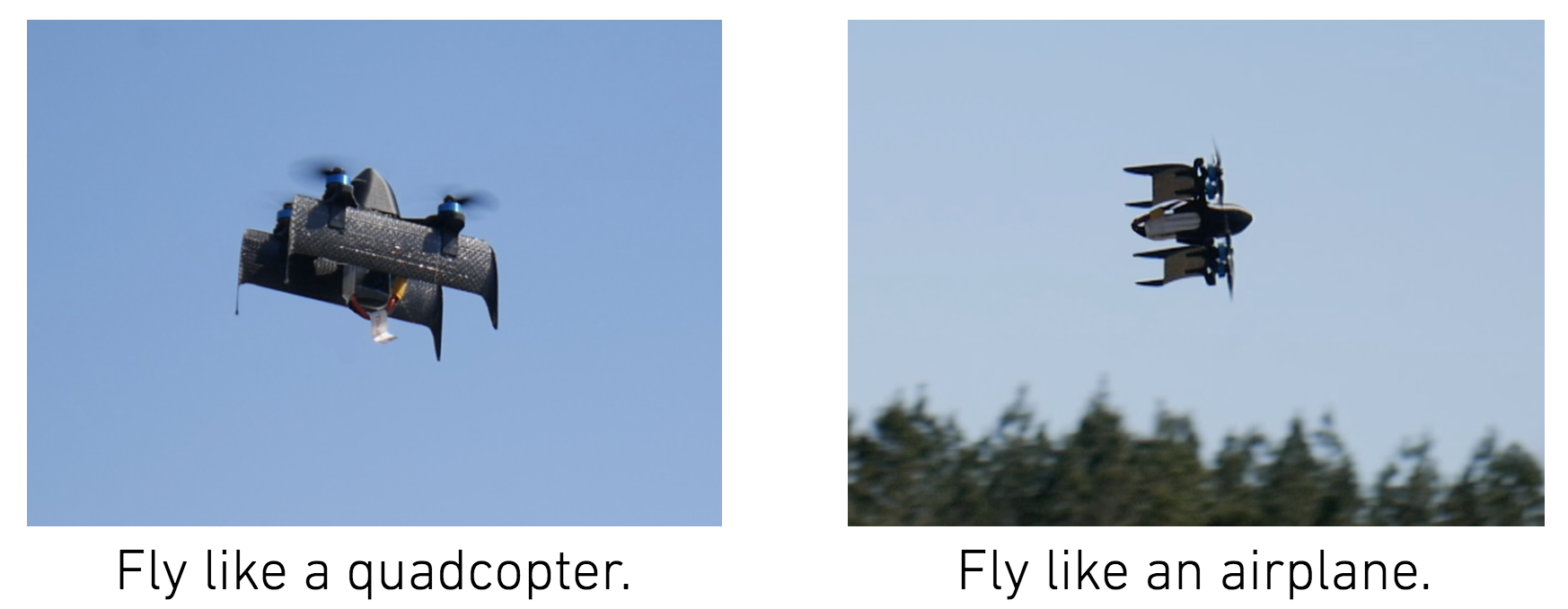
This is the Mini QBiT (or Mini Quadrotor Biplane Tailsitter). It's a high performance quadcopter that takes advantage of biplane wings for additional lift, thereby improving the range and endurance and making for a seriously fun aircraft to fly! I've been researching the concept at the University of Maryland Alfred Gessow Rotorcraft Center for the last 4 years, and I decided to adapt the idea to a small 250 sized racing quad. Watch my full video on it below:


Some thoughts:
It's still a work in progress (as all things are I suppose...). Finding the best wings for the platform, including some form of autonomy, etc are all things I am interested in accomplishing with this vehicle. What makes it so great is that it's tiny, under the FAA 250g weight limit, inexpensive, and fairly crash damage proof. Which means that performing research testing is relatively stress free.
With the exception of the wings, all of the parts can be 3d printed. And in the spirit of Flite Test, all of the files are open sourced and free for you to download so that YOU can make it yourself (see the links in the youtube description).
What's it like to fly?
Personally, I think its a lot more fun that a quadcopter. Pitching forward to 90 degrees and maintaining the same altitude is simply a magical feeling. Matching your pitch level with your throttle to find the perfect balance between thrust from the props and lift from the wings is a seriously unique experience. I especially love flying super low to the ground (like an inch or two), to the point where you can literally cut grass, and then pitching up whenever you want, with the full force of a racing quadcopter. As with most things, there are some drawbacks: You lose some maneuverability because the wings produce a ton of drag when you pitch back up into hover, so don't expect to have the same high speed turning radius as a quadcopter. But to me, that's somewhat of an advantage, because it forces you to fly with coordination.
Conclusion:
I would love to see people trying this concept out, whether you strap some wings to your quad, build similar QBiT's on a larger scale, or build the Mini QBiT. In this way, the Mini QBiT can grow through the power of the larger community, rather than just the confines of our research group. Thanks for your time and interest!
Here's some papers from the University of Maryland on the subject. I'd also like to give credit to Vikram Hrishikeshavan, the pioneer of the qudrotor biplane concept. You can find his papers and more below:
Experimental Investigation of Performance of a Wing-Propeller System for a Quad-Rotor-Biplane Micro Air Vehicle: https://www.researchgate.net/publicat...
Development of a Quad-Rotor Biplane MAV with Enhanced Roll Control Authority in Fixed Wing Mode: https://www.researchgate.net/publicat...
Design and Development of a Scaled Quadrotor Biplane with Variable Pitch Proprotors for Rapid Payload Delivery: https://www.researchgate.net/publicat...
Aerodynamic and Mechanical Design of a Morphing Winglet for a Quadrotor Biplane Tail-sitter: https://www.researchgate.net/publicat...
Expanding the Mission Capabilities of a Quadrotor Biplane Tail-sitter with Morphing Winglets: https://www.researchgate.net/publicat...








Log In to reply
I really waited to a solution like this, because where I fly FPV, those are always places which are difficult for an RC plane to take of and land. And I always searched for a solution like that, that will give an easy landing and take off, and also better range due to the wings.
I would like to see how adding FPV to it will look like and feel.
Thank you,
Tal
Log In to reply
Log In to reply
Log In to reply